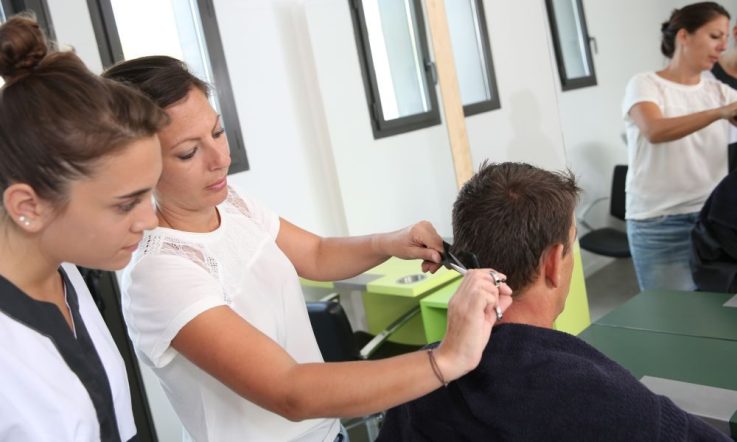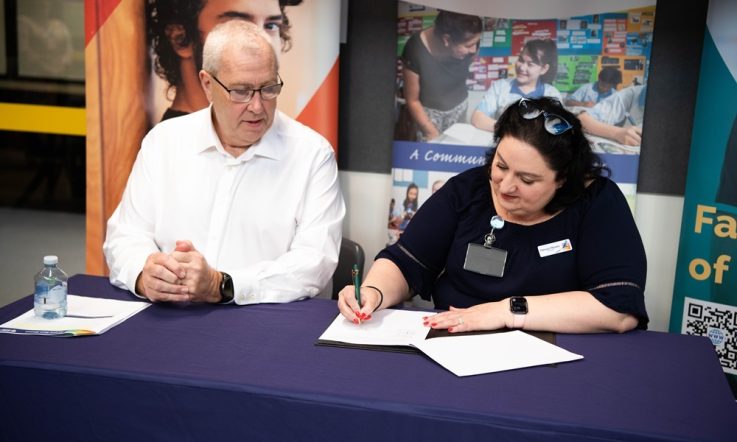We know that young people's post-school pathways and decisions are influenced by what happens to them at school. Recently on Teacher, we’ve shared a range of content on how schools across Australia are supporting student pathways and career development in their contexts. You can read about a new partnership between Charles Darwin University and Dripstone Middle School supporting students’ health and wellbeing outcomes and bridging the gap between secondary and tertiary study, or listen to a podcast sharing how Fairhills High School in Victoria have developed a dedicated careers website for students. In today’s article, we speak with Careers Advisor Stephanie Malnar from Arthur Phillip High School in New South Wales about how she supports students’ career aspirations by collecting data to ensure appropriate resources are provided.
Last term, we brought you news on the largest ever study on the job ambitions of 15-year-olds, published by the OECD (Earp, 2025). The findings showed that not enough young people are participating in career development activities connecting them with real people in real jobs. In Australia, 50% of students reported visiting a job fair; 47% had undertaken internships (short term work placements); and 36% had participated in job shadowing or work-site visits.
Arthur Phillip High School in Parramatta, New South Wales, is a school with approximately 1,650 students. Careers Advisor Stephanie Malnar supports teenagers with their careers education in a range of ways, including arranging work experience placements, careers excursions and maintaining university partnerships. She has been the school’s Careers Advisor since 2019 and works alongside their recently-appointed second Careers Advisor and a Transition Advisor.
‘Our students at Arthur Phillip High School are very humble. They're incredibly appreciative of all the opportunities that they receive in the careers and transition space. And it's a very rewarding role because the feedback is often very positive, as well as the outcomes. We try and cater for students from diverse cultures, diverse learning needs and experiences,’ Malnar tells Teacher.
A range of opportunities for students
Malnar’s role involves one-on-one careers counselling with students to support them with year 11 and 12 subject choice and university applications. She also provides work experience placements for all year 10 students, arranging excursions to careers expos and universities, and more.
Malnar also coordinates School-based Apprenticeships and Traineeships (SBAT) – where approximately 6 students are currently completing a traineeship as part of their HSC – and TAFE, Vocational Education and Training (TVET).
‘I currently have 30 students across year 11 and year 12 who do a VET course at TAFE or … another external VET provider as part of their HSC. I have students, for example, doing real estate, nursing, electrotechnology and the list goes on. And that's a great opportunity for those students because schools can only offer a limited number of VET subjects.’
Using data to inform decision making
To inform the careers support provided to students, a key activity for Malnar is drawing on the findings from the Post-School Destinations and Experiences Survey run by the New South Wales government. The survey has been administered annually since 2014 and garners responses from approximately 35,000 school leavers each year who report on their post-school destinations.
‘That helps us to look over our program and see what needs to be refined; what other opportunities we can offer, because we noticed that from one cohort to another, some students might be more vocational-oriented while others might be more university-oriented,’ Malnar explains.
‘We need to make sure through that data that we’re finetuning our programs so we’re actually meeting the demands and the needs of the students.’
At the start of the 2025 school year, Malnar also sent out her own survey to Arthur Phillip High School students to find out if they are considering a vocational or university pathway, or an employment opportunity through a traineeship or apprenticeship.
‘That allows me then to invite guest speakers to the school. So, for example, this term I’ve had 6 different universities … present to our students about course offerings, scholarships, direct pathways and alternate pathways. That's very well received by our students. And the universities love coming to our school because our students ask so many questions; they're very highly engaged and very aspirational. Data is very important because otherwise you're just guessing as to what their needs and aspirations are.’
The importance of professional learning
Engaging in professional learning opportunities is another activity Malnar relies on to stay up to date with industry news.
‘I make sure I attend careers advisor professional learning opportunities that are offered through my professional association, which is the Careers Advisors Association of NSW & ACT, but also through TAFE and universities – [they] also offer careers advisor days to update us on new courses, new trends, new opportunities, new programs,’ Malnar says.
Malnar also attends school-based network meetings with local government, independent and Catholic schools where they share work experience data.
‘For example, I share where [students from schools in the network] went for work experience with the new group of year 10 students, so they have a starting point – a list of employers that they can contact.’
Utilising partnerships
Partnerships with the community, tertiary institutions and local industries can help schools tap into external resources, support, and expertise.
Some of the partnerships Malnar utilises to support student pathways include partnerships with Western Sydney University, UNSW and the University of Sydney through their school outreach programs. Recently a group of 60 students from Arthur Phillip High School visited UNSW where they could meet staff, tour the campus and attend faculty sessions. A similar visit to the University of Sydney is coming up.
Arthur Phillip High School also has a partnership within the New South Wales Department of Education’s Educational Pathways Program and Infrastructure Pathways Program.
‘I like connecting with community, with universities and industries to provide students with opportunities so that they can see a connection between what they're studying and where they want to be when they leave school,’ Malnar says.
‘I think that connection is really important and it's something you can only do when you harness those partnerships through the Department of Education, through your community links, through industry groups.’
References
Earp, J. (2025, May 26). Research news: Preparing teenagers for their future careers. Teacher magazine. https://www.teachermagazine.com/au_en/articles/research-news-preparing-teenagers-for-their-future-careers
As a careers advisor, what data do you utilise to inform the support you offer students with their career development? Does your state or territory run a post-school destination survey? Is there an opportunity to survey students yourself to ascertain where their interests lie?



